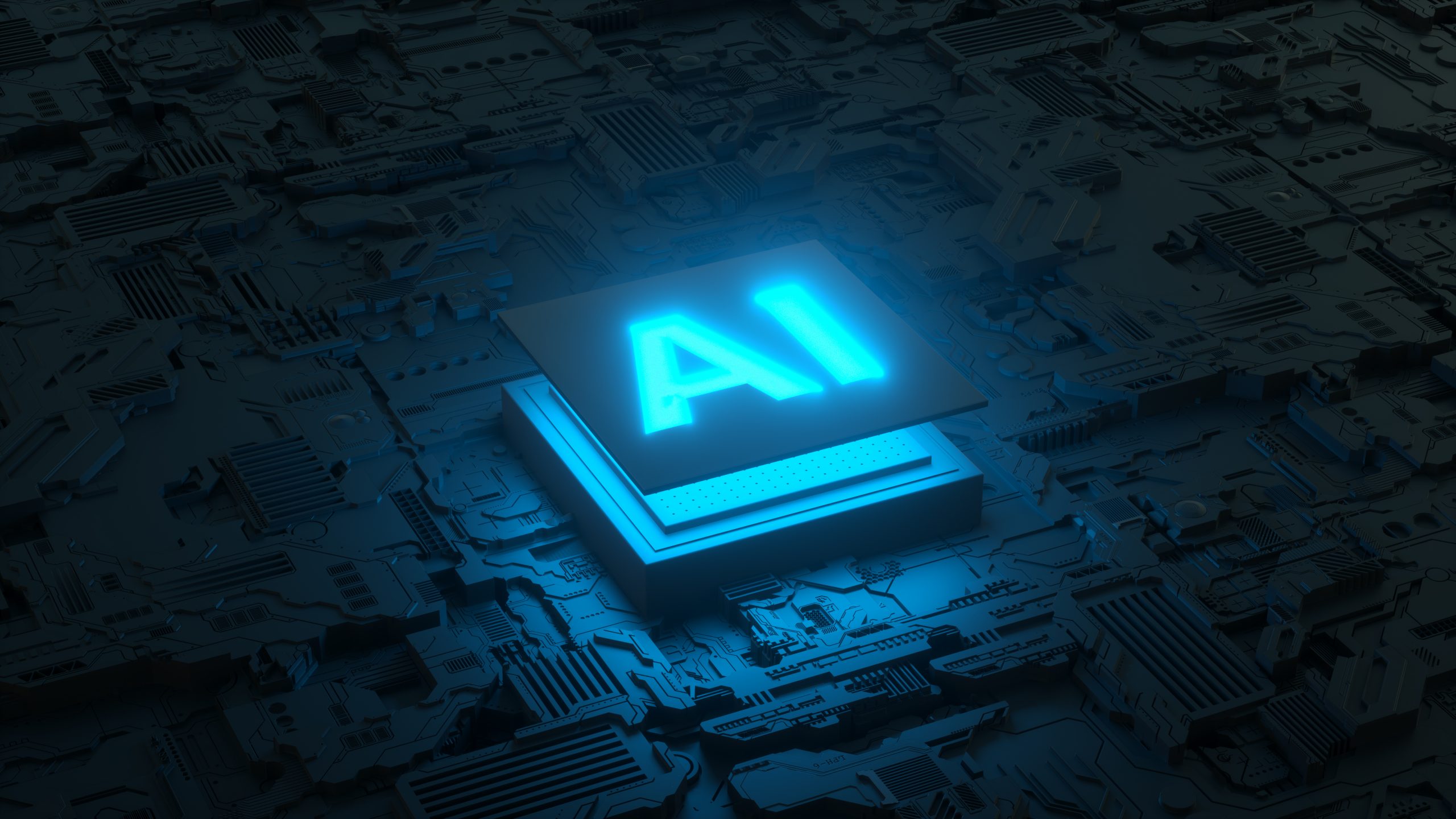Introduction
Are you looking to get started with machine learning using Python? If so, then you’re in luck.
Python has been gaining traction as one of the best programming languages for machine learning and artificial intelligence due to its flexibility and ease of use. In addition to being easy to learn and understand, Python offers a wide range of libraries and packages that make it easy for developers to work with machine learning projects.
In this article, we’ll provide an overview of the basics of getting started with machine learning using Python. We’ll cover topics such as what machine learning is, why you should use Python for it, how to install the necessary software, and more. We’ll also provide examples of some basic machine learning applications using Python.
By the end of this tutorial, you should have a better understanding of what machine learning is, why you should consider using Python for your next project, and how to actually get started. So let’s dive in!
What is Machine Learning?
Machine learning is an incredibly powerful tool in the right hands. It’s revolutionizing the way we approach data science, allowing us to make sense of large amounts of complex data in ways that simply weren’t possible before. But how do you get started with machine learning using Python? The process can seem daunting at first, but it doesn’t have to be as intimidating as it seems.
Definition
Machine learning is a subset of artificial intelligence in which computers are trained to perform certain tasks, such as image recognition or classification, without being explicitly programmed to do so. Instead, they learn from data, which is fed to them either in the form of labeled training examples (supervised learning) or through unsupervised learning algorithms that allow them to discover patterns on their own.
Applications
Machine learning is a process of teaching computers to learn from data. It is a branch of artificial intelligence based on the idea that systems can learn from data, identify patterns and make decisions with minimal human intervention.
There are many different types of machine learning, but in general, there are two main approaches: supervised learning and unsupervised learning. Supervised learning is where the computer is given a set of training data, and the expected output, so that it can learn to map the input to the output. Unsupervised learning is where the computer is given data but not told what to do with it, so it has to figure out patterns and relationships itself.
There are many different applications for machine learning. Some of the more common ones include:
- Classification: This is where the computer is given a set of data and asked to predict which category it belongs to (e.g. is this an image of a dog or a cat?).
- Regression: This is where the computer is given a set of data and asked to predict a numerical value (e.g. what is the price of this house?).
- Clustering: This is where the computer is given a set of data and asked to group it into different clusters (e.g. group these images by subject matter).
- Dimensionality reduction: This is where the computer is given a set of data and asked to reduce the number of dimensions while still retaining as much information as possible (e.g. reduce a 4-dimensional dataset down to 2 dimensions).
- Anomaly detection: This is where the computer is given a set of data and asked to detect anomalies or outliers (e.g. find all credit card transactions that are fraudulent).
Why learn Machine Learning?
Machine learning is a process of teaching computers to learn from data without being explicitly programmed. It is a key driver of artificial intelligence and has wide-ranging applications in areas such as facial recognition, self-driving cars, and fraud detection.
There are many reasons to learn machine learning. Firstly, it is an in-demand skill: according to Indeed, the number of job postings for machine learning roles has increased by 344% since 2013. Secondly, machine learning is a well-paid field: the average salary for a machine learning engineer in the US is $145,000. Finally, machine learning is an exciting and rapidly evolving field: new breakthroughs are being made all the time, and there are always new challenges to tackle.
So if you’re interested in a career in machine learning, or if you simply want to be able to understand and use the latest AI technology, then learning machine learning is a great choice. And Python is an excellent language to learn for machine learning, due to its simple syntax, vast ecosystem of libraries and tools, and active community. So if you’re ready to get started with machine learning using Python, read on!
Job opportunities
There are many job opportunities available for those with experience in machine learning using Python. Python is a widely used programming language with many libraries and tools that make it ideal for data science and machine learning tasks. Jobs that require machine learning using Python skills can be found in a variety of industries, including but not limited to:
- Technology
- Banking and Finance
- Retail
- Healthcare
- Manufacturing
The demand for machine learning engineers is increasing as more and more businesses adopt data-driven decision making. Python is a versatile language that allows you to build sophisticated models and algorithms to power these decisions. If you’re looking to start or further your career in machine learning, learning Python is a great place to start.
Automated decisions
In today’s business world, data is king. The more data a company has, the better they can understand their customers and make decisions to improve their business. However, sifting through all of this data can be a daunting task, even for the most experienced analysts. This is where machine learning comes in. Machine learning is a type of artificial intelligence that can automatically learn and improve from experience without being explicitly programmed to do so.
There are many different types of machine learning algorithms, but they all have one thing in common: they rely on large amounts of data to learn. This data can be used to train the algorithm to recognize patterns and make predictions. For example, a machine learning algorithm could be used to predict which products a customer is likely to buy based on their past purchase history.
Machine learning is already being used by companies all over the world to improve their businesses. Amazon uses machine learning to recommend products to customers and eBay uses it to detect fraud. And that’s just the tip of the iceberg. As machine learning becomes more sophisticated, its applications will become even more widespread.
If you’re interested in getting started with machine learning, Python is a great language to use. Python is easy to learn and has many libraries that make working with machine learning data easier. In this article, we’ll show you how to get started with machine learning using Python.
Getting Started with Machine Learning using Python
Python is a programming language that is widely used in many different fields, including machine learning. Machine learning is a branch of artificial intelligence where computers learn from data to improve their performance at a task. Python is a popular language for machine learning because it is easy to read and write, and there are many libraries available that make working with data easier. In this article, we will go over some basic concepts in machine learning and show how to get started with Python.
Machine learning algorithms can be divided into two main groups: supervised and unsupervised. Supervised learning is where the computer is given training data that has been labeled with the correct answers. The computer then tries to learn a general rule from this data so that it can apply it to new data. Unsupervised learning is where the computer is given data but not told what the correct answers are. The computer then has to find structure in the data on its own.
There are many different types of machine learning algorithms, but we will focus on two of the most popular ones: decision trees and neural networks. Decision trees are a type of supervised learning algorithm where the computer builds a tree-like model of decisions based on the training data. Neural networks are a type of supervised learning algorithm that attempt to mimic the workings of the brain.
Getting started with machine learning can seem daunting, but Python makes it easy. There are many different libraries available that you can use to work with data, build models, and make predictions. In this article, we will walk through a simple example of how to get started with machine learning using Python.
Installation of Python and libraries
Python is a programming language with many features that can be used for machine learning. In this section, we will install Python and the necessary libraries for machine learning.
Python can be installed from the Python website (https://www.python.org/). Download the latest version of Python 3 (as of this writing, Python 3.7.1). Be sure to download the correct version for your operating system (Windows, macOS, or Linux). Once the download is complete, run the installer and follow the prompts.
After installing Python, you will need to install some libraries for machine learning. The most popular library for machine learning in Python is scikit-learn (http://scikit-learn.org/). To install scikit-learn, first make sure you have pip installed (pip is a package manager for Python that makes it easy to install libraries). To check if you have pip installed, open a command prompt (on Windows) or terminal (on macOS or Linux) and type:
pip –version
If you see something like “pip 9.0.1 from c:\python34\lib\site-packages (python 3.4)”, then you have pip installed and can proceed to install scikit-learn. If you don’t have pip installed, see the installation instructions for pip (https://pip.pypa.io/en/stable/installing/).
Once you have pip installed, you can install scikit-learn by running the following command in a command prompt or terminal:
pip install scikit-learn
Other useful libraries for machine learning in Python include NumPy (http://www.numpy.org/) and pandas (https://pandas.pydata.org/). These libraries can be installed using pip as well:
pip install numpy
pip install pandas
Creating a dataset in python
Python is a great language for Machine Learning because of its strong support for numerical computing and data science libraries. In this section, we will go over how to create a dataset in Python using the Pandas library.
Datasets are the foundation upon which machine learning models are built. Without good data, it is very difficult to build good models. Therefore, it is important to know how to create datasets that are tailored to your specific problem and contain the right information.
The Pandas library is a powerful tool for working with data in Python. It provides a high-level interface for creating, manipulating, and working with dataframes, which are similar to tables in traditional relational databases.
Creating a dataset in Python using Pandas is a simple process. First, you need to import the Pandas library into your Python script:
import pandas as pd
Next, you need to specify the columns that you want in your dataset and their data types:
columns = [‘column1’, ‘column2’, ‘column3’]
types = [‘int’, ‘float’, ‘str’]
Then, you can create your dataset by passing in the columns and types to the pandas.DataFrame constructor:
dataset = pd.DataFrame(columns=columns, dtype=types)
Finally, you can add data to your dataset by indexing into it and assigning values to the columns.
Building and Training a Model
Building and training a machine learning model is an iterative process. Depending on the size, complexity, and nature of your data, it can take a lot of trial and error to find a model that accurately predicts the target variable. In this section, we’ll walk through the process of building and training a machine learning model using Python.
First, you’ll need to gather your data. This data should be representative of the task you’re trying to predict. For example, if you’re trying to predict housing prices, you’ll need data on housing prices and relevant features (location, size, etc.). Once you have your data, you’ll need to split it into training and test sets. The training set is used to train the machine learning model, while the test set is used to evaluate the model’s performance.
Next, you’ll need to choose a machine learning algorithm and configure it for your problem. There are many different algorithms to choose from, and each has its own advantages and disadvantages. You’ll need to experiment with different algorithms to find one that works well for your data.
Once you’ve chosen an algorithm, you’ll need to train your model on the training data. This is where the machine learning magic happens! The model will learn how to map input data to the target variable.
Finally, you’ll evaluate the model’s performance on the test data. This will give you an idea of how well the model generalizes to new data. If the model performs well on the test data, it’s likely that it will perform well on unseen data in the real world.
Testing and Evaluating the Model
In order to test and evaluate our machine learning model, we need to split our data into training and test sets. We will use 70% of our data for training and 30% for testing.
We will also need to normalize our data so that all the features are in the same range. This is important because some machine learning algorithms are sensitive to the scale of the data.
Once we have split and normalized our data, we can train our machine learning model on the training set. Then, we will make predictions on the test set and compare those predictions to the actual values. This will give us a sense of how well our model is performing.
There are a number of ways to evaluate a machine learning model. Some common metrics include accuracy, precision, recall, and f1-score. In this case, we will be focusing on accuracy.
Accuracy is the percentage of correct predictions that our model makes. If our model has an accuracy of 80%, that means it correctly predicts the outcome 80% of the time.
Precision measures how many of the predictions that our model makes are actually correct. For example, if our model has a precision of 80%, that means out of all the predictions it made, 80% were correct.
Recall measures how many of the actual positive cases our model was able to identify. For example, if our model has a recall of 80%, that means it was able to identify 80% of all the positive cases in our data set.
F1-score is a measure that combines both precision and recall. It is calculated by taking the harmonic mean of precision and recall.
Once we have evaluated our machine learning model using one or more of these metrics, we can then choose to keep or discard it based on how well it performed.
Reinforcement Learning
Reinforcement learning is a type of machine learning that is concerned with teaching agents to make optimal decisions in an environment. This is done by providing the agent with feedback in the form of rewards and punishments after each action. The goal is for the agent to learn to maximize its reward by choosing the best actions.
Reinforcement learning can be used for a variety of tasks, such as playing games, controlling robots, and making financial decisions. It has been shown to be successful in many different domains. In recent years, reinforcement learning has gained popularity due to its successes in DeepMind’s AlphaGo, which defeated a professional Go player, and OpenAI’s Dota 2 bot, which beat professional human players.
There are two main types of reinforcement learning: off-policy and on-policy. Off-policy methods can learn from previous data and do not need to interact with the environment to learn. On-policy methods must interact with the environment and learn from each experience.
Reinforcement learning algorithms are typically divided into three classes: value-based, policy-based, and actor-critic.
Value-based methods try to estimate the value function, which is the expected long-term reward for an agent following a particular policy. Policy-based methods directly try to find an optimal policy without estimating the value function. Actor-critic methods use both value functions and policies to find an optimal solution.
There are many different reinforcement learning algorithms, but some of the most popular include Q-learning, SARSA, and TD learning.
Q-learning is a value-based algorithm that estimates the value function using aBellman equation. SARSA is a policy-based algorithm that updates its policy according to theexpected reward of the current state-action pair. TD learning is an actor-critic algorithm that learns both the value function and the policy simultaneously.
Reinforcement learning is a powerful tool for teaching agents how to make optimal decisions. It has been successful in many different domains and is continuing to be developed and improved upon.
Conclusion
In conclusion, Machine Learning is an incredibly powerful tool that can help automate decision-making and improve the accuracy of predictions. It has become an essential component in many areas, including finance, healthcare, robotics, and more. The Python language is the most popular choice for developing machine learning models due to its ease of use and wide range of libraries and frameworks. By following the steps outlined in this article, you can quickly get started with Machine Learning using Python. After installation and setup, you can create a dataset and build and train a model. With the help of testing and evaluation, you can fine-tune your model to improve its performance. Finally, reinforcement learning is an advanced Machine Learning technique that can be used to create more sophisticated models. With this introduction to Machine Learning using Python, you now have the knowledge to begin developing your own projects.




